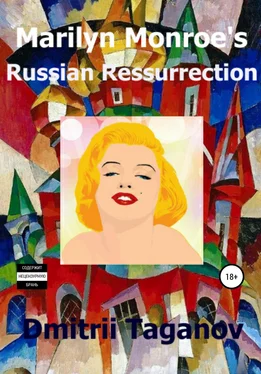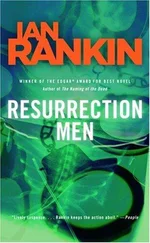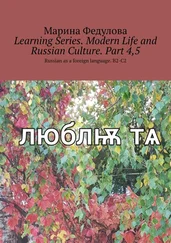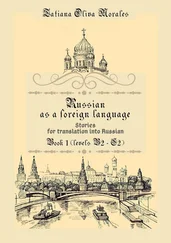When their car reached a smoother road, Fomin turned to Marilyn and said softly, “Your elder brother arrives the day after tomorrow.”
Having heard these words, Myacheva, who sat by Marilyn, uttered a constrained shriek and grasped her breasts with both hands.
7. The Mission Assigned from Death-bed
The old man, who was left at the impoverished home for the aged, and who was known by false name Sedov, was actually the legendary academician, a star of the Soviet science, a proud recipient of the numerous government rewards, and also a former member Central Committee of the Communist Party of the Soviet Union. That was a career-zenith anyone could dream of in this country, but that was thirty years ago.
As a scientist Sedov was occupied then by the mysteries of organic life, but as the member of Ts-Ka of his Party he administered all fields of biology and its researches in dozens of laboratories and institutions. In the early eighties the famous laboratory under his direct leadership was on the verge of epochal discovery, which could bring results worthy of Nobel Prize. Although, Sedov refused to publish anything; he and his colleagues never uttered a word about the matter of their research outside their laboratory. That was very right thing to do, as it would have had revealed later.
The theme of their epochal discovery was the cloning, that is indistinguishable, as facsimile copying of any living beings, but at the molecular and genetic level. There was some experimenting with cloning also abroad; cloned lambs, doggies and other animals were born in some laboratories, but they didn’t live long and died in extreme anguish. Soviet renowned scientist and ardent communist Sedov attained then an unbelievable advancement in genetics and practical cloning; he could not just clone, but could now make some sort of fax-copies, and almost send them by wire – of the human beings. To make a perfect human clone he needed just clipped off scraps of nails or a lock of hair, and a pair of smears taken from the private parts, preferably of original human person’s, but his immediate kin’s would also could do. The clone would turn out healthier if could be used tissues of his intestines, but still better from his head.
Having felt a chill in a backbone at the prospects of his discovery, the academician instantly proclaimed all information on this subject as classified material. He called the First department of his laboratory, a branch of secret police KGB , to be the watchdog of his top secret research. The next day Sedov, as a member of Party’s Central Committee, applied for an appointment with the powerful chief of Soviet secret police KGB , comrade Yuri Andropov. In a week Sedov entered with self-assured stride the office in the most dreaded building during gulag years on Lubyanka square.
The academician explained KGB chief as simply as he could the essence of his discovery. The tall elderly man just silently and patiently watched him through his glasses, asking no questions. Then he suddenly cut short the academician, “Whom do you intend to clone first?”
Academician faltered: he never thought of that. At least he never thought about his human clones as of real people with regular names and surnames of their prototypes. Being a scientist, he always imagined them being nude and virgin as biblical Adam and Eva.
“Well, we haven’t yet planned that. I mean … may our Party decide that, because of immense importance and implied consequences of such action.”
“OK, can you clone, or copy, or whatever – can you resurrect all the Old Bolsheviks massacred by Joseph Stalin? Can you resurrect entire old Lenin’s guard?”
Struck dumb, scientist said, “I think, yes, we can possibly try. Why?”
“These days of moral decay we need as never before, as an air in our lungs, their enthusiasm, their revolutionary gust, their Bolshevist courage. They would kind of vaccinate all of us, all our country. They would inspire our Party with a new life, with a new flame and ideas!”
“Yes, comrade Andropov, we could do this, that is a great honor for us,” uttered the academician, coining the words. “Their genetics materials had been wisely preserved with an incredible far-sight by Soviet scientists in the twenties; it’s in excellent condition: the body tissues, brain slices. I know it as a curator of Organics laboratory which oversee the body of immortal Lenin in his mausoleum .”
“Fine. Yet, don’t you breathe a word to anyone. Do you understand? All I said is a top state secret. You will be informed of my decision. Go to your work, and don’t waste any time.”
Academician waited nearly a year for this decision to be relayed to him, but the government-direct-line telephone in his office, vertushka , was silent. Suddenly – as can be sudden the death of a sick eighty-year old – died current Secretary General who ruled the country for more than twenty years. It also triggered the coming death-harvesting of gerontokratia in the Party’s Politburo. He was buried with a pomp and artillery salutation in the grave near the Kremlin wall on the Red Square. The next Secretary General, the third in history of the Party, was elected by the intimate circle of old members of Politburo. They elected KGB chief Yuri Andropov.
When academician saw a foot-high photo of the new Secretary General in the party paper Pravda he announced top alert warning in his laboratory, though everything was ready months ago. All the previous year, not yet having any directives from above, the academician, using his position of a member of the Central Committee, could manage to get the cuts of the brain and samples of body tissues of almost all Lenin inner circle Bolsheviks of early twenties, of all legendary Lenin “Old guard” ruined later by Joseph Stalin. In his hyper-freezers were also stored now ready for initial experiments the tissues of great poets and scientists of the country. All these precious materials came from the Institute of Brain, laboratory, organized by Bolsheviks, and which received in mandatory manner the brains of all the state’s elite who died in the twenties and the thirties of natural causes or not. These brains came, and that was registered by photographs, in a shallow bathroom basins, covered with plain towels, for consequent weighing, cutting into paper-thin slices, and then a profound research. It was universally believed that disclosing of the mystery of human genius was a matter of paramount importance for a young Soviet science. In those famine-years, when millions died deprived of the bread that was sold abroad for machinery for the industrialization , this Institute of Brain was granted precious death-tolled gold to purchase in Germany a marvelous machine that could cut off finest, almost transparent layers of human brain, as a ham in a food store. Of course, those scientists didn’t decipher the riddle of human intelligence with those translucent pink-colored films, but, nevertheless, they stored them as a priceless treasure, each one between two glasses, inside of the tall beautiful cabinets of polished walnut.
Yet, months were elapsing, but the academician’s team didn’t get any commands from above. A year passed in a strained waiting, although quite suddenly academician and his lab forgot all about their ambitious dreams. From the remote Afghanistan to their country commenced to arrive on leisurely schedule long trains of refrigerators loaded with the cargo 200 . That was the designation for casualties, coined at that time and became regular in later post-Soviet bloody clashes. Cargo 200 from Afghanistan directly affected academician and his laboratory, though not all of it, but only hundreds of burnt or torn to tatters, and hence unrecognizable remains, having neither names nor faces. Academician and his lab plunged into the enormous work of their identification. Only their organics lab had sophisticated genetics expertise for this job, to determine the identity of everyone in order to pay last tribute to these fallen heroes.
Читать дальше












